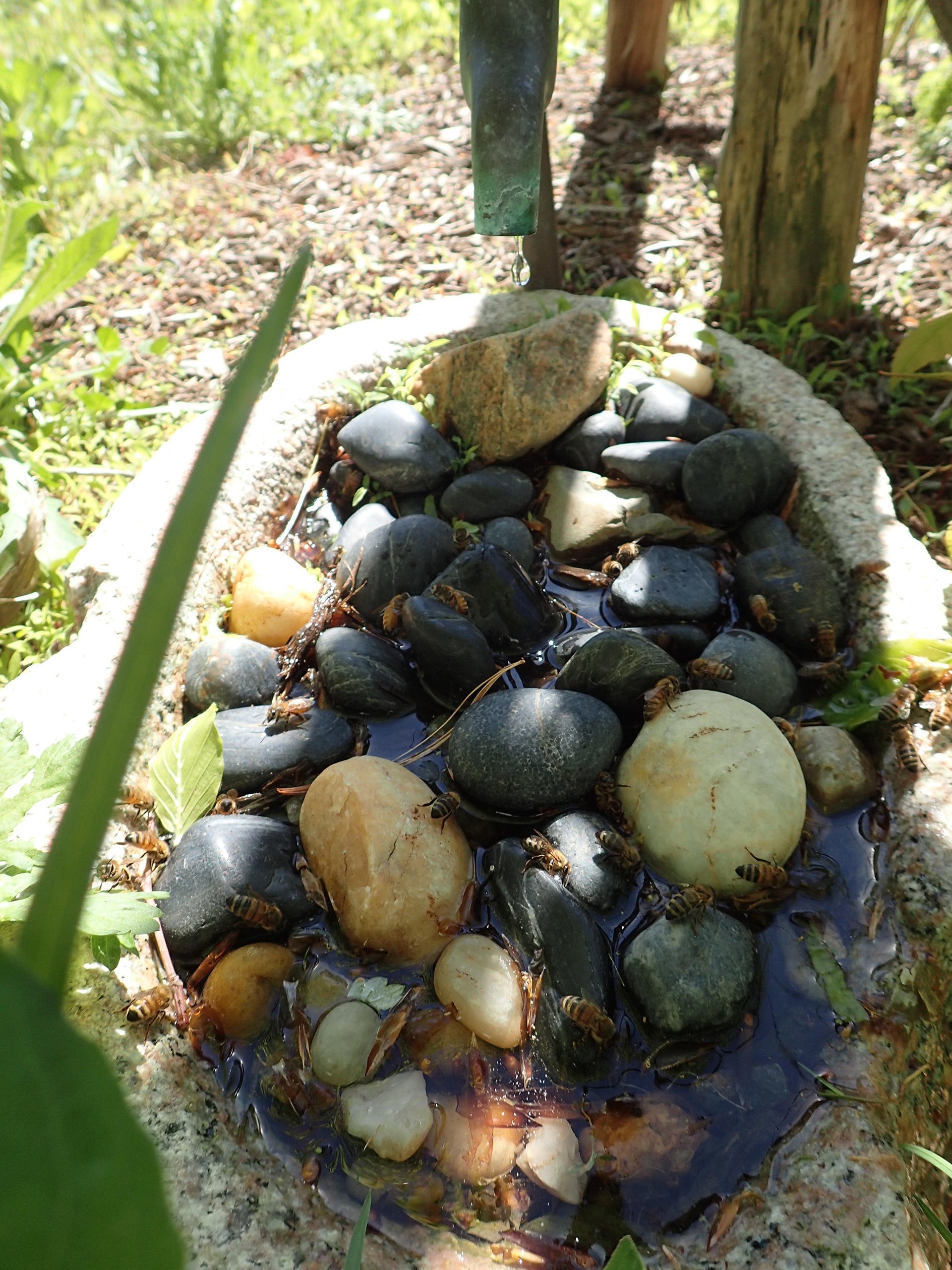Homesteading Series: Swarmy Weather


Part IV of a series on homesteading; growing and preserving your own food, raising animals for wool and milk, foraging, and more.
According to Albert Einstein, “If the bee disappeared off the surface of the globe, then man would have only four years of life left. No more bees, no more pollination, no more plants, no more animals, no more man.”
So, if you think of it that way, bees are at the very top of the food chain. Our lives dangle from their tiny, busy legs.
And you would have to live in a box not to know that the world’s honeybee population — our most prolific pollinators on the East End — has been declining for years.
According to master beekeeper Deborah Klughers of Bonac Bees, there’s three simple things people can do to ensure the bees’ survival.
Perhaps the easiest and most important way to help bees continue to proliferate instead is to use less chemicals when doing lawn and garden maintenance, preferably using organic products only. (In another article, we’ll cover the importance of weeds like dandelions, mullein, burdock, garlic mustard, common plantain — all of which could be growing outside your window right now.)
Second are the swarms, which sound, and may seem scary, but are really when a bee is at its most vulnerable. It’s homeless and discombobulated, looking for a place to rest. Sometimes that place may be your attic, or a tree on your property.
Around this time of year, “honeybees start to swarm,” Klughers said. “They’re being cued by nature, by the pollen coming in, which is what they use to feed baby bees. A honeybee swarm is a survival method, a way of reproducing as a species.”
She said new beekeepers might not understand what’s going on in the hive, or know it’s swarm time, and that the bees are going to leave.
“They’re not looking to attack anyone, they’re looking for a new home,” Klughers said. “Don’t call pest control. They will exterminate the bees.”
That’s where the Long Island Beekeepers Club can help. The website provides a list of beekeepers who can remove swarms on Long Island, sometimes resorting to a construction cut-out if necessary — it’s not always simple to remove one that’s decided your walls are a nice place to raise the kids.
“They don’t bore holes, but they can take advantage of a situation and get in,” said Klughers, who added if it’s an easily-accessible swarm, she and others will rehome the bees at no cost.
Third is providing resources every animal needs — water and food.
“Pollen is sticky,” Klughers said. “Bees need water to convert pollen and nectar into honey.”
A bird bath with rocks and stones for bees to perch on while they sip is ideal. Planting flowering fruit trees for pollen and nectar is ideal.
“One tree can provide hundreds, thousands of times the pollen of a flower garden,” Klughers said.
Finally, if you have a chemical-free property on the East End, Klughers, along with other “beeks” — the affectionate nickname beekeepers give themselves — can create an apiary, a place where bees are kept, and check up on it for you. Bonac Bees will also help those interested in creating their own apiary, ensuring the honeybee population for years to come.
For more information, visit www.bonacbees.com. The Long Island Beekeepers Club can be found at www.longislandbeekeepers.org. To learn more about becoming a beekeeper yourself, “Beekeeping for Dummies” is available online and at local bookstores.
bridget@indyeastend.com



